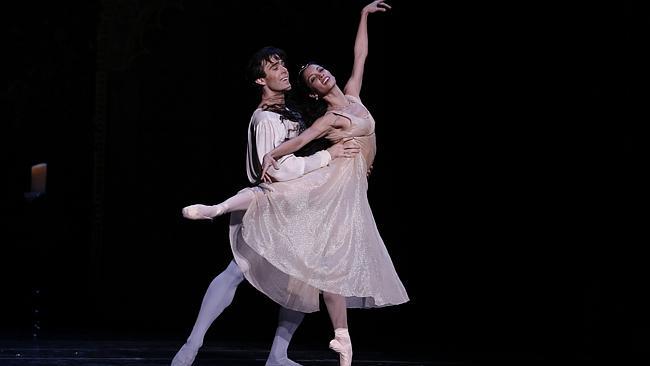Australian Ballet, Houston Ballet Romeo & Juliet with Stanton Welch
The Australian Ballet’s latest collaboration with Stanton Welch is audacious at every conceivable level.

The Australian Ballet’s latest collaboration with Stanton Welch is audacious at every conceivable level. After Graeme Murphy’s underwhelming Romeo and Juliet (2011), many expected a retreat to the silky grace of John Cranko’s 1962 production, long in the company’s repertoire. Instead, artistic director David McAllister invited Welch, as resident choreographer and Houston Ballet’s artistic director, to bring his lavish 2015 adaptation to Melbourne with a full contingent of dancers.
To have the Australian Ballet present another company is unusual. To do so with a relatively untested production of a work the subject of centuries of stage and screen adaptation and previously choreographed by such 20th century ballet greats as Ashton, Cranko, MacMillan and Nureyev is undeniably courageous.
This faith in Welch’s creative and directorial abilities proves well founded. While his classically anchored choreography reveals traces of productions past, movement and mime are propelled by a distinctive and invigorating dramatic rigour, born of sophisticated analysis of both Shakespeare’s text and Prokofiev’s score. The result is a smooth, cleverly paced and highly nuanced narrative that (as compared with its balletic predecessors) is truer to the Bard’s account and is told with a lucid, naturalistic dance vocabulary supremely attentive to the music’s dramatic and expressive cues.
Requiring more intellectual engagement than other productions, this close marriage of drama, music and dance is certainly unique. Yet, even in pure dance terms, Welch has reimagined the lovers’ ball, balcony and bedroom pas de deux, as well as the full ensemble market and ball numbers — the former incorporating exuberantly sweeping lifts, sensual turns and passionate entanglements, and the latter evoking factional rivalry, rigid honour codes and flexing machismo through strong angular poses, menacing advancing lines and strict metric subdivision of movement.
Roberta Guidi di Bagno’s designs (dimly lit by Lisa Pinkham) are as ravishingly beautiful as they are historically accurate. Multiple towers, modelled closely on northern Italian renaissance fortifications, move about to facilitate scene changes, while silky backdrops match the luxuriant sheen of costumes that visually group factions by colour: Venetian reds for the Capulets, powder blues for the Montagues and light tans for the House of Escalus.
With exceptionally detailed character work and fearless technique from the entire company, the immediacy of this production’s joy and tragedy is made complete with Karina Gonzalez, one of the most credible Juliets to grace the stage, and her Romeo, Connor Walsh, positively beaming with the rapture of new love.
While the dancers could not have been more assured, opening night saw Orchestra Victoria in uncharacteristically clumsy form under guest conductor and Houston Ballet music director Ermanno Florio, with the strings and wind fumbling through the first two acts’ opening measures and then stumbling inexplicably, again, in the third.
Tickets: $42-232. Bookings: online. Duration: 180 mins, including two intervals. Until July 9.



To join the conversation, please log in. Don't have an account? Register
Join the conversation, you are commenting as Logout